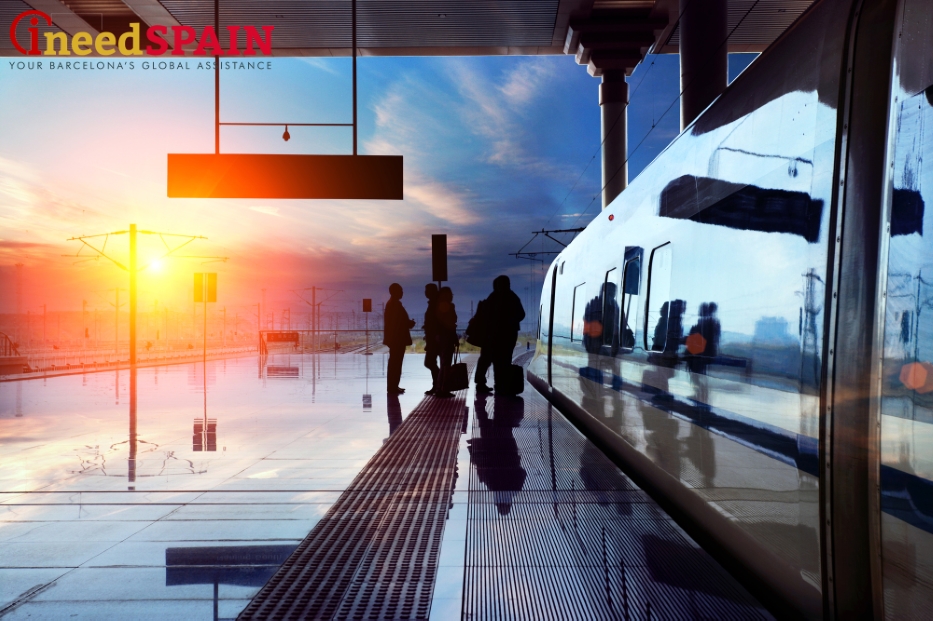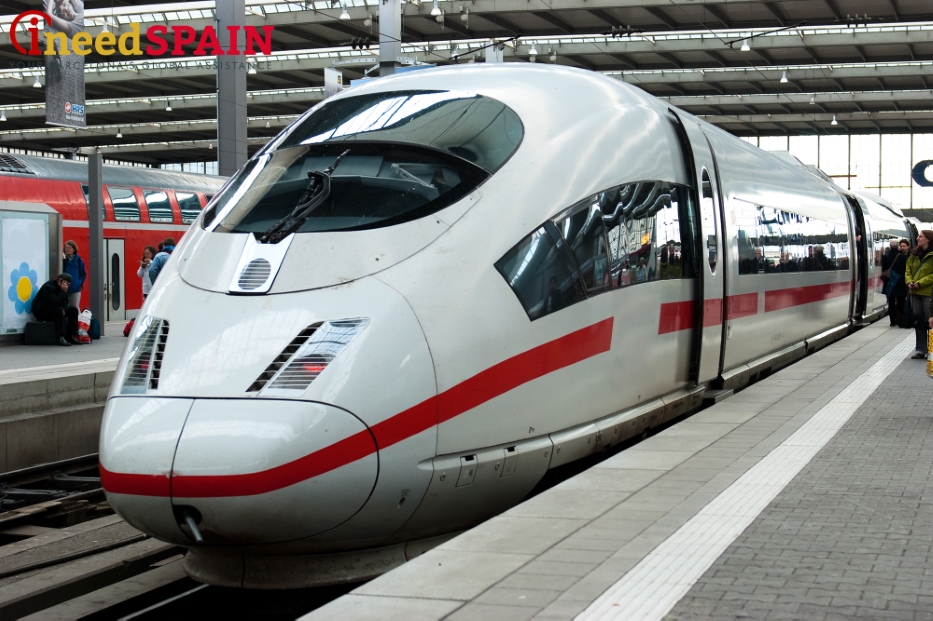
The first railway in Barcelona appeared in 1848 and was intended to connect the city with the small village of Mataró. Although this connection may seem odd at first glance, this train destination in Barcelona was not selected by chance. After Miquel Biada, a native of Catalonia and founder of the major railway construction company, returned to his homeland, the first project he undertook was to connect Barcelona with his native village. In spite of the fact that the project was developed as early as 1840, and, according to estimates, the railway should have been ready to operate in a year, the construction process actually lasted for 8 years.
At the turn of the century, with the development of capitalism, several large, private companies engaged in private transport emerged on the horizon. In the first part of the XX century, connections among the largest Spanish cities were established. The Barcelona railway system acquired its present image and structure in the middle of the last century. In the 1940s, the decision was made to nationalize the railway system throughout the country. As a result, the transport company RENFE was created and still holds the monopoly on railway operations. (In Spanish, RENFE stands for “Red Nacional de Ferrocarriles Españoles,” or “National Railway Network of Spain.”)
The total length of railway controlled by the company constitutes 15,000 kilometers, most of which have wide tracks of 1668 mm. In order to improve efficiency, in 2005, RENFE was divided into the infrastructure management company ADIF and the RENFE Operadora company to deal directly with cargo and passenger transportation services.
Nowadays, the railway system of Barcelona consists of 13 lines, 6 of which are run by RENFE and the other 7 by FGC (“Ferrocarrils de la Generalitat de Catalunya,” or “Railways of Catalonia”). FGC runs some metro lines as well as some suburban train destinations. The Barcelona railway system is split into 6 zones, with Sants Station as the central point of this complex network.
Types of trains in Barcelona

Since the railway system in Barcelona and in Spain at large is very well developed, various types of trains circulate on different routes. All of these types differ by territorial criteria (such as route directions), times of circulation, and frequency of departure. All of the trains operating in Spain can be divided into four categories:
- Fast, long-distance train – AVE (“Alta Velocidad Española”). Such trains are capable of accelerating up to 350 km/h and circulate on special railway tracks. You can buy tickets for this train to destinations on one of two routes: Barcelona - Madrid - Perpignan (France) and Barcelona - Girona - Figueres. When traveling by fast train AVE, it takes only two and a half hours to get from Barcelona to the Spanish capital. Trains of this category create serious competition for domestic flights. In addition to their high speed, these trains are famous for their elegant exterior and interior designs, comfortable seats, and the availability of a restaurant car in each. (If you travel in business class, lunch will be served straight to your seat.)
- Fast, long-distance trains of Euromed, Talgo, Arco, Alaris, Altaria, Аlvia, and Expreso. This category of trains is extremely popular among travelers. The tickets are cheaper than those for AVE, and the speed is also lower – usually reaching up to 160 km/h. The possibility to arrive at additional destinations is the main advantage of choosing these trains. They operate all over the country and have a higher circulating frequency than AVE. Every train belonging to the high-speed category has its own route. For this reason, when choosing a train to travel around the country, it is of crucial importance to study the routes thoroughly and select the one that matches your needs most fully.
- Local trains (Tranvia, Automotor). These trains are the equivalent of suburban trains. They circulate all over the country and inside the regions, and, as a rule, they connect the larger cities with the outskirts and small villages.
- Night trains (Trenhotel, Estrella). Trains in Barcelona operate from 5:00 am until midnight on weekdays, on Fridays until 2:00 am, and on Saturdays and holidays around the clock. If you prefer to travel overnight rather than wait until Saturday, it is possible to purchase a ticket for a night train. This option offers both couchettes and regular seat accommodations, but the former are slightly more expensive. When travelling in business class on night trains, you may be provided with a comfortable compartment with a private shower.
Service levels and Barcelona railway tickets

As with any other transportation method, trains in Barcelona offers tickets of several classes that differ by the options available and their levels of service. Various train categories offer travellers different classes of service, and they can be divided into three general categories:
- Preferente (business class equivalent). This option is a great choice for those who love travelling in comfort and are prepared to pay for the extra luxury. As a rule, the ticket cost includes lunch, the most comfortable seats on the train, recent newspapers, Wi-Fi, and other amenities.
- Club (club class). This option is nearly the same as Preferente. Moreover, in this case, passengers have access to a bar and a free parking space for one day.
- Turista (economy class). This option includes access to a multimedia system, audio system, electrical outlets, toilets, and a changing space for babies.
There are different tariffs on Barcelona railway tickets (e.g., Promo, Flexible, Ida y Vuelta) that presuppose different terms of purchase/exchange/return and varying numbers of trips and passengers. Often, the number of tickets at special tariffs is not high, and these are sold out very quickly, as the best bargains allow passengers to save from 20% to 70% of the standard ticket cost. The only drawback of the tariff system is the inability to change the time and date of a trip after purchase (except in the case of Flexible tariff tickets).
The prices for Barcelona railway tickets depend on the duration of the trip, the class of service, and the tariff selected. For instance, a trip from Barcelona to Madrid in the tourist class of a fast AVE train may vary from 60 to 130 euros. You can buy a ticket for the trains in the ticket offices at the Barcelona railway stations, on the official RENFE website (after which a ticket will be sent to your e-mail, and you will have to print a copy), or via the ticket terminals at the stations.
The specialists of the service center, “INEEDSpain,” will help make your journey the most beneficial and convenient experience possible. We provide consultations and assistance in finding and booking transportation tickets, and we help our clients create their ideal trip itineraries!





